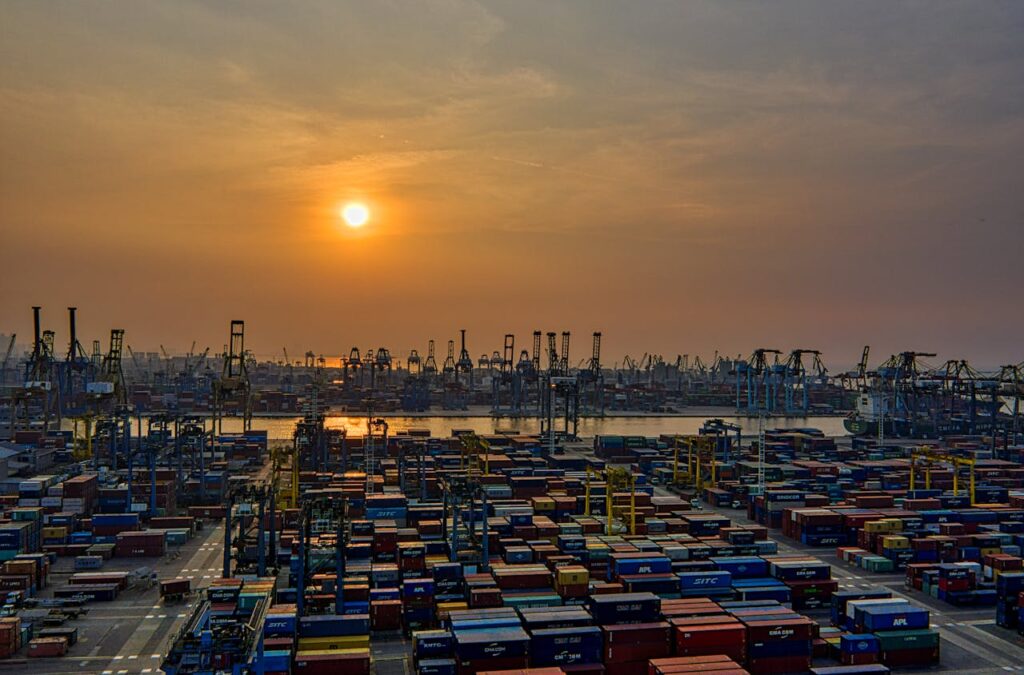Navigating the Waves: The Evolution of Australia’s Domestic Transport from 2022 to 2024

In the rapidly changing landscape of global and domestic transport, Australia has faced its fair share of trials and triumphs. The years 2022 through 2024 have been particularly pivotal, showcasing not just the resilience of the Australian transport sector but also its adaptability and forward-thinking approach in the face of adversity. Let’s delve deeper into this transformative period, exploring the challenges, recoveries, and forecasts that have shaped the industry.
A Year of Unprecedented Challenges
The year 2022 was marked by significant upheaval in Australia’s domestic transport sector. The cumulative effects of the COVID-19 pandemic, along with geopolitical tensions and trade disruptions, led to a notable 7% hike in shipping costs across the country. The industry grappled with container shortages and severe port congestion, causing Australian ports to face an average delay of 3.5 days per shipment. This had a cascading effect on the supply chains, inflating costs across various sectors and straining the logistics infrastructure to its limits. The Australian Bureau of Statistics reported that transport disruptions contributed to an estimated 2.5% increase in overall product costs for consumers, highlighting the broad economic impact of these logistical challenges.
2023: Steadying the Ship
As 2023 dawned, the domestic transport sector began to find its footing, aided by strategic investments and policy interventions. The government and private sector collaborated on enhancing port infrastructure, leading to a 30% improvement in port congestion management. Innovations in digital logistics solutions, including the adoption of blockchain and IoT for better tracking and forecasting, played a crucial role in enhancing operational efficiency. This technological leap forward reduced shipment delays to an average of 2 days, a significant improvement from the previous year. Additionally, the rollout of new rail infrastructure projects aimed to strengthen the link between urban and rural areas, promising to alleviate some of the pressure on road transport and provide more sustainable and efficient freight alternatives.
2024: Looking Ahead with Optimism
The outlook for 2024 is bright, with forecasts indicating a more resilient and efficient domestic transport framework. Experts predict a 5% reduction in domestic shipping costs, thanks to improved port management practices and the continued integration of technology in logistics operations. The sector is also witnessing a gradual shift towards sustainability, with the projected adoption of alternative fuel vehicles expected to cut carbon emissions from the transport sector by 10%. This aligns with Australia’s environmental goals and represents a significant step towards reducing the logistic industry’s carbon footprint.
Moreover, the focus on enhancing intermodal transport solutions is set to continue, facilitating smoother transitions between different modes of transport and further optimising the supply chain. Such initiatives are critical for meeting the growing demand for faster, more reliable delivery services, spurred by the e-commerce boom.
Conclusion: The Journey of Resilience and Innovation
The journey from 2022 to 2024 has been a testament to the Australian domestic transport sector’s ability to navigate through challenges with resilience and innovation. By investing in infrastructure, embracing technology, and prioritising sustainability, the industry is not just overcoming present difficulties but is also laying the groundwork for a more robust and flexible future. As we look forward to the rest of 2024 and beyond, it’s clear that the lessons learned and the strides made during these transformative years will continue to shape the landscape of domestic transport in Australia, ensuring it remains prepared to face whatever new challenges lie ahead.
